“Empower Your Body: 10 Yoga Poses for Strength”
“Unleash your inner strength through yoga! Explore 10 empowering yoga poses that redefine fitness and vitality. Transform your body and mind
Incorporating yoga into your fitness routine can be a transformative experience, providing both physical and mental benefits. While many people associate yoga with flexibility and relaxation, it’s important to note that yoga can also be a powerful tool for building strength. In this article, we will explore nine yoga poses that are specifically designed to enhance your muscular strength. These poses not only help you achieve a more sculpted and toned physique but also promote balance, stability, and overall well-being.
Suggestions: Keto Diet Recipes
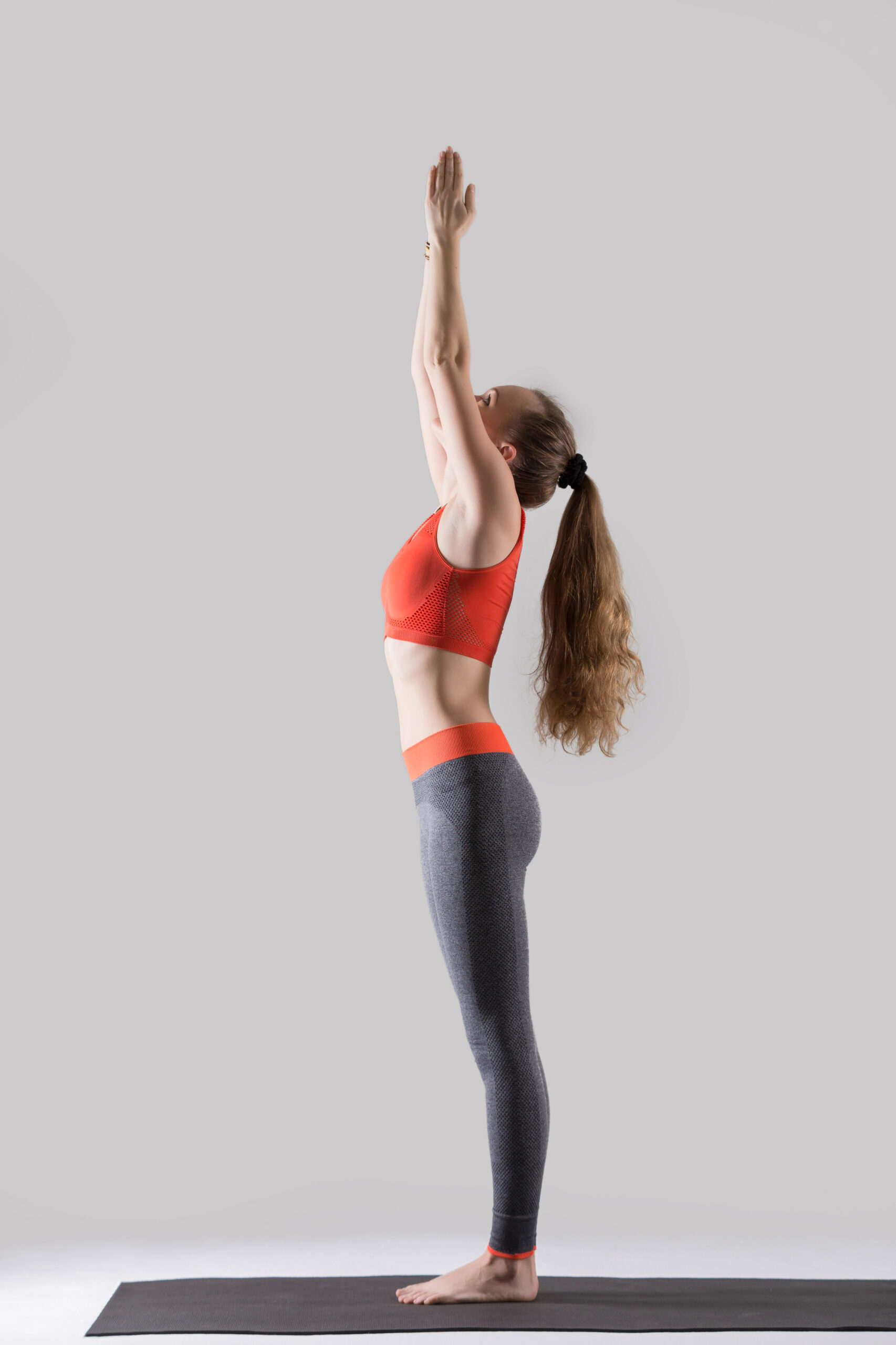
1. Tadasana (Mountain Pose)
Our journey commences with the venerable Mountain Pose, a foundational posture that underpins a myriad of yoga asanas. Despite its apparent simplicity, this stance exerts a profound impact on the legs, core, and the posterior muscle groups. Stand resolutely with your feet conjoined, grounded firmly on the mat. Elevate your arms with palms facing forward, thereby evoking a posture of empowerment. Engage your core as you maintain this stance for a span ranging from 30 to 60 seconds, all the while immersing yourself in the profundity of your inner strength.
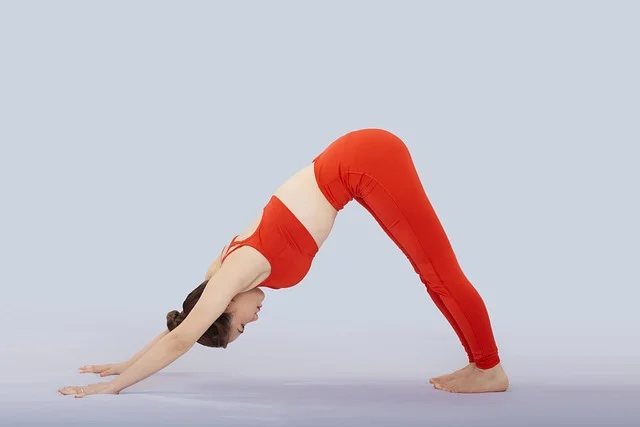
2. Phalakasana, or Plank Pose
In our exploration of yogic postures, the Plank Pose, or Phalakasana, emerges as a potent asset for a holistic physical regimen. This pose exerts its influence over the arms, shoulders, core, and the lower extremities, making it a versatile full-body exercise. Assume a push-up position with your arms fully extended and your hands firmly planted upon the mat. The alignment of wrists with shoulders is imperative. By engaging the leg and core musculature, fashion a straight line that extends from the cranium to the heels. The capacity to maintain this posture for a duration of 30 to 60 seconds begets tangible enhancement in the overall robustness of the physique.
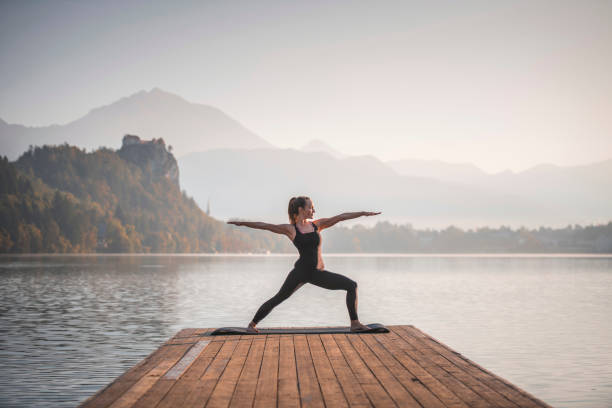
3. Virabhadrasana II (Warrior II Pose)
The Warrior II Pose, also known as Virabhadrasana II, serves as a crucible for the augmentation of muscular strength in the chest, arms, and lower extremities. Orient your right foot outward at a 90-degree angle, aligning it with the arch of the left foot. Assuming a wide stance, sustain a right knee bend at a 90-degree angle in alignment with the ankle. Extend your arms laterally, parallel to the terrestrial plane. Fixate your gaze ahead, directed towards the right hand. The endurance of this posture for a span ranging from 30 to 60 seconds, prior to shifting sides, invariably invokes a profound sense of vitality in the arms and thighs.
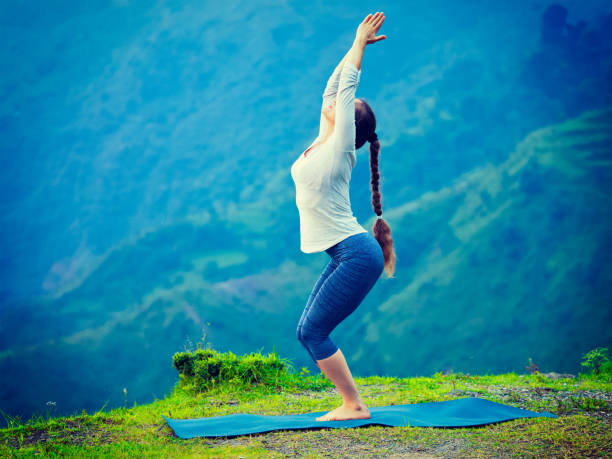
4. The Chair Pose (Utkatasana)
The Chair Pose, scientifically referred to as Utkatasana, represents a formidable asana designed to target the quadriceps, gluteal muscles, and the lumbar region. In the standing position with feet conjoined, extend your arms anteriorly. Execute a seated descent akin to an invisible chair, preserving the integrity of the spine and maintaining an elevated thoracic region. The acceptance of this challenge and the subsequent endurance of this pose for a duration spanning 30 to 60 seconds indisputably precipitate an elevation in muscular strength.
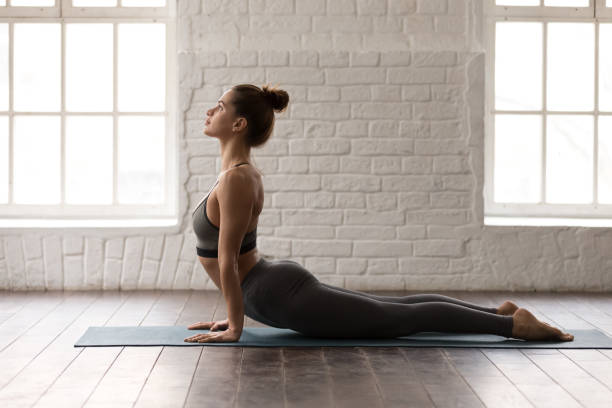
5. Bhujangasana (Cobra Pose)
The Cobra Pose, known for its moderate backbend, bequeaths fortification to the vertebral column, shoulders, and gluteal region. In a prone orientation, place your palms adjacent to the shoulders while lying prostrate. Inhale deeply as you elevate the chest away from the mat, all the while ensuring the pelvis and lower extremities remain firmly affixed to the ground. Maintain a relaxed deportment as you draw the shoulders away from the auditory organs. The sustenance of this position, spanning a temporal scope of 15 to 30 seconds, with a progression of endurance, is instrumental in engendering fortitude.
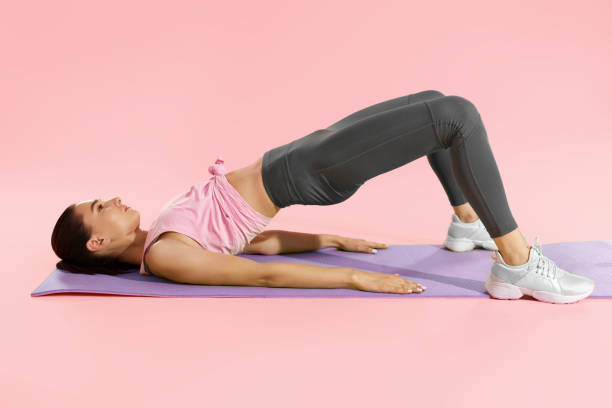
6. The Bridge Pose, or Setu Bandhasana
The Bridge Pose, or Setu Bandhasana, proves to be an efficacious modality for the cultivation of resilience and suppleness within the dorsal region, gluteal muscles, and the hamstrings. In a recumbent posture with the feet set apart at hip-width and the knees flexed, one proceeds to elevate the pelvic region skyward. Simultaneously, the feet and arms press assertively against the ground, with the interlacing of fingers beneath the torso and the extension of the upper extremities. The incremental progression of the temporal dimension, spanning from 30 to 60 seconds, is accompanied by the conspicuous enhancement of strength within the dorsal and gluteal regions with every respiration.

7. Boat Pose (Navasana), seventh
Navasana, colloquially known as the Boat Pose, is emblematic of a posture that tests the resilience of the core musculature while simultaneously challenging the hip flexors. While kneeling upon the mat with both feet in contact with the floor, initiate the liftoff of the lower extremities, reclining slightly and balancing upon the sit bones. Straighten the legs to orchestrate the formation of a V-shaped body configuration. The extension of arms in an anterior direction contributes to the enduring sense of core fortitude. The sustenance of this pose for a duration of 20 to 30 seconds, with a gradual ascent in temporal endurance through dedicated practice, is indicative of an escalating vitality within the core musculature.
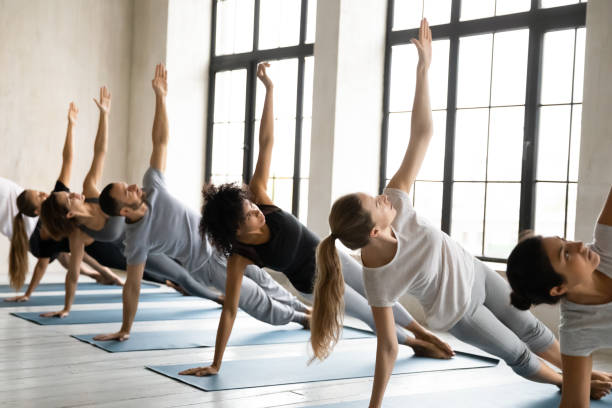
8. Vasisthasana, and the Side Plank Pose
The Side Plank Pose presents itself as a holistic exercise that rigorously challenges the upper limbs, wrists, oblique muscles, and the lower extremities. Initiate by assuming the plank position. Subsequently, redistribute the body’s weight to the right hand and the outer facet of the right foot. The equilibrium is achieved by superimposing the left foot atop the right counterpart, with the left arm extended skyward. A persistent engagement in this pose for a temporal frame spanning 20 to 30 seconds, when executed bilaterally, leads to discernible enhancement in both upper body and core strength.
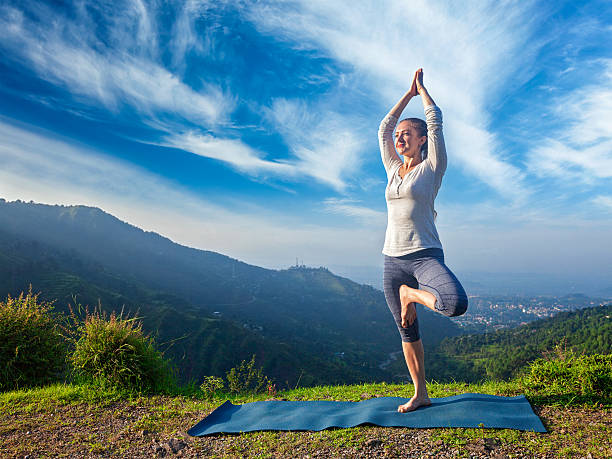
9. The Tree Pose, or Vrikshasana
The Tree Pose, scientifically denoted as Vrikshasana, furnishes an efficacious avenue for the augmentation of core musculature and the strength of the supporting lower extremity, whilst also enhancing overall equilibrium. Delineate the weight upon the left foot while maintaining a stance characterized by proximity between the feet. The sole of the right foot is delicately situated either above or below the knee, obviating contact with the knee joint. Conjoin the hands in a devotional gesture at chest level. The endurance of this pose for a temporal expanse ranging from 30 to 60 seconds on each side affords one the privilege of experiencing the empowerment and equilibrium it imparts.
10. Locust Pose (Salabhasana)

- Starting Position: Begin by lying on your abdomen with your arms by your sides and your forehead resting on the mat. Your legs should be together.
- Leg Lift: Inhale and lift your legs off the ground, keeping them straight. Simultaneously, engage your buttocks and lower back muscles. Your feet should be a few inches off the mat.
- Upper Body Lift: While continuing to inhale, lift your upper body as well. Use your back muscles to lift your chest and head off the mat. Keep your gaze forward and avoid straining your neck by looking up too much.
- Balance and Hold: In this position, your entire body should be lifted, except for your lower abdomen, which remains on the mat. Your weight should be supported by your lower ribs and pelvis. Keep your legs and chest raised for a few breaths.
- Release: Exhale and gently lower your legs and upper body back to the mat. Rest for a moment in the initial position.
Summary.
It is incumbent upon us to reflect on the instrumental role that these pivotal yoga postures play in the augmentation of physical strength. It is worth noting that yoga transcends the confines of mere sport; thus, a mindful approach to practice is paramount. Embrace the transformative journey, for through unwavering dedication, you shall bear witness to remarkable metamorphoses in your physical endurance, suppleness, and general well-being.
FAQs
- Is Yoga Suitable for Novices?
Indubitably! Yoga is a discipline accessible to individuals of all fitness levels, including those embarking on their maiden voyage into the world of yoga. Commence with rudimentary postures, progressively advancing your practice as comfort levels elevate.
- Can Yoga Facilitate Weight Loss?
Yoga, with its primary emphasis on fostering flexibility and strength, may indirectly contribute to weight management by fostering a healthier lifestyle and mitigating stressors.
- What’s the Optimal Frequency for Performing these Strength-Building Yoga Poses?
To witness tangible enhancements in both strength and flexibility, it is recommended to engage in these yoga poses at a minimum frequency of three to four sessions per week.
